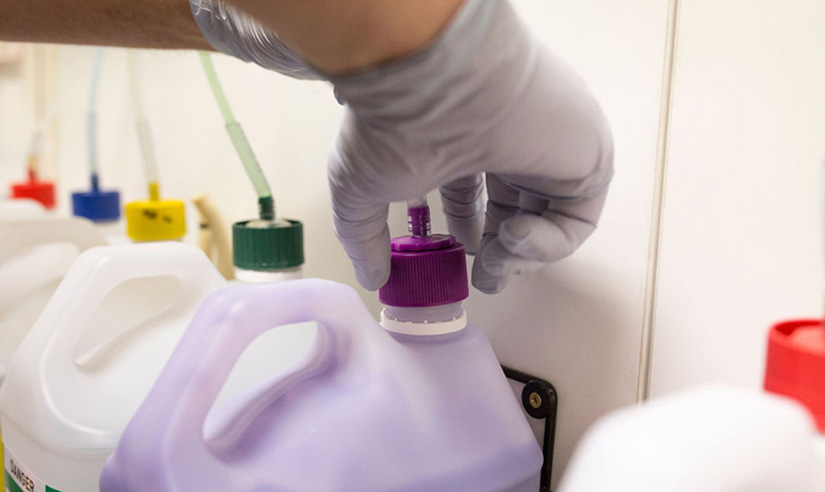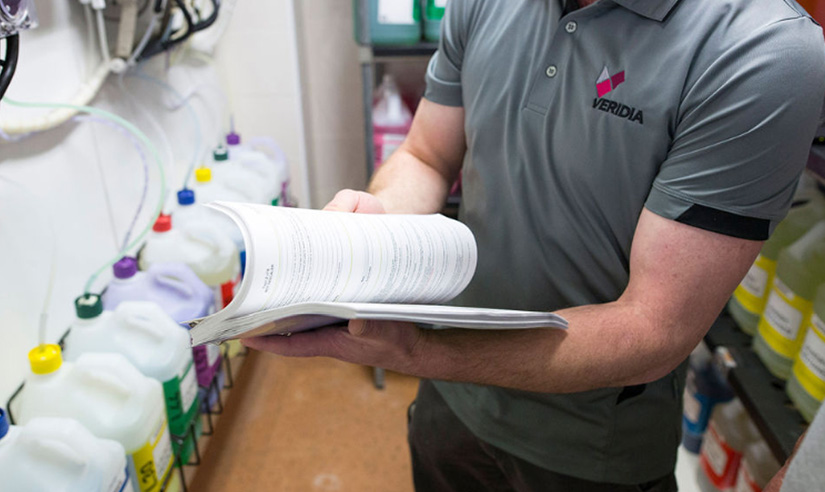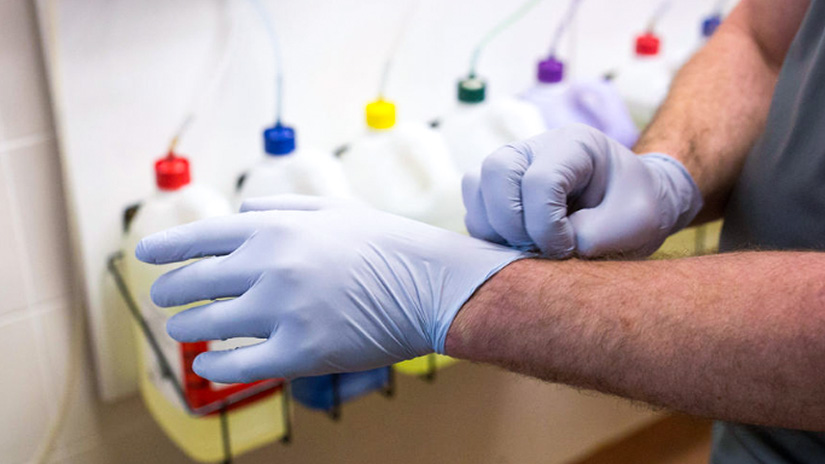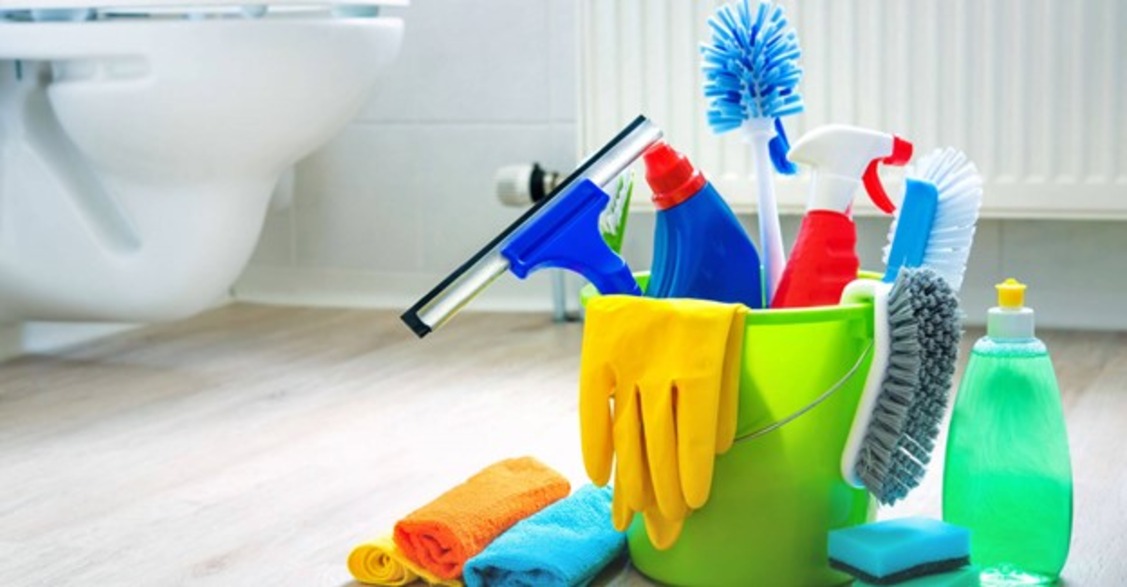Yet, no one seems to have the time to explain the science of laundry, even though it could boost your efficiency and wash results.
Our laundry expert, Dean Constable, is filling the gap with this series on laundry practices.
Laundry Disinfection
Our first topic is disinfection.
Your residents need bacteria-free clothing, especially during a pandemic.
Laundry disinfection can determine accreditation results, or even save the life of a resident.
How do you deliver laundry results that:
- hold disinfection standards for AS4146:2000, to maintain your facility’s accreditation
- keep your residents safe and comfortable
- and curb your costs?
By using your equipment to its fullest potential.
Types of Laundry Disinfection
First, there are two main types of laundry disinfection:
- Thermal (heat) disinfection
- Chemical disinfection
Thermal Disinfection
Thermal disinfection uses high temperatures to kill bacteria, in the main wash bath of the wash cycle.
Washers are programmed to heat incoming water to the set temperature and maintain this temperature for the time required.
Problems that occur with thermal disinfection include:
- Faulty heating elements in the washing machines
- Insufficient onsite power supply to operate the heating elements
- Not enough time programmed to maintain temperatures and meet standards
- Faulty temperature sensor causing incorrect temperatures
- Incorrect programming
In one example, laundry staff can set stains with thermal disinfection, if they raise temperatures at the wrong time of the wash. This will ‘bake’ the soil into the clothing.
These problems can be prevented by following the recommended heat and time combinations.
- 65°C maintained for at least 10 minutes, or
- 71°C maintained for at least 3 minutes
Author’s Note
It will take time for heat to penetrate the load.
Most programmable washers now have the option to exclude the time until the set temperature is reached.
This means the temperature is maintained for the required time to achieve the standard for thermal disinfection.
However, some washers may not have this option. In this case, allow mixing time, depending on the load level:
- For low loading, allow 4 minutes
- For high loading, 8 minutes
Allowing time for mixing gives us four minimum wash cycle times:
| Low temperature (65°C) | High temperature (71°C) | |
| Low loading | 14 minutes | 7 minutes |
| High loading | 18 minutes | 11 minutes |

Chemical Disinfection
Chemical disinfection uses chemicals dispensed during a wash cycle.
This includes manual and automatic systems. Automatic dispensing systems add the chemicals at amounts and times preset by a technician.
Chemical disinfection is usually used alongside thermal disinfection. It is also used when washing heat-sensitive items that can’t handle thermal disinfection.
Some examples are laundry detergent, bleaches (including chlorine and hydrogen peroxide) and ozone.
The benefits of chemical disinfection include:
- A backup disinfection method when thermal is not working
- Reduced washing times
- Reductions in energy and water usage
- Less maintenance on heating elements
- Less damage to linen tensile strength over time
Chemical disinfection also has some potential issues:
- Incorrect supply of product
- Faulty equipment not delivering set amounts of chemical
- Too much chemical used damaging linen
- Lack of washer and system servicing
- Incorrect procedures in operation.

You must validate chemical disinfection practices as equivalent to the above thermal guidelines before they are accepted for routine use.
Validation is based on factors such as:
- the setup of the laundry
- the service frequency
- the products in use
- the levels used to achieve disinfection
- the testing procedures
Factors that must be included are:
- an identification of the chemical
- the concentration at which it is supplied and at which it is to be used
- the means used to indicate equivalent effectiveness
- bacteria testing reports
Records
Best practice also requires record-keeping on:
Setup
Setup is paramount in achieving consistent disinfection for all linen, all the time. Correct setup also ensures there are no issues in quality or cleanliness. To maintain effective disinfection, you must record and review thermal and chemical setups.
Servicing
Servicing of all equipment including washers, dryers and chemical systems must be kept up to date. You should keep all reports for servicing and bacteria testing onsite for a minimum of 12 months.
Wash Cycles
Formulas for all wash cycles should be recorded and kept onsite. These records should include the following information: Type of linen (wash cycle classification) Amount of linen to be washed (washer size in kg) Detailed wash program (including time, temperature & water level for each step of the cycle) Chemical amounts delivered per wash cycle
These records will be needed for accreditation. You should monitor them to guarantee your laundry meets any requirements.
Other Factors
Other laundry processes are effective in reducing or killing viruses and bacteria. These include dilution, agitation, drainage and drying.
For example, ironing or tumble drying after washing can reduce bacteria in linen.
Other important considerations include:
- selecting the correct wash cycle for linen wash requirements
- sorting linen properly
- loading correctly
Summary
Understanding the science behind laundry disinfection is vital to safe operation.
When you implement these guidelines, your laundry will have few issues with disinfection.






